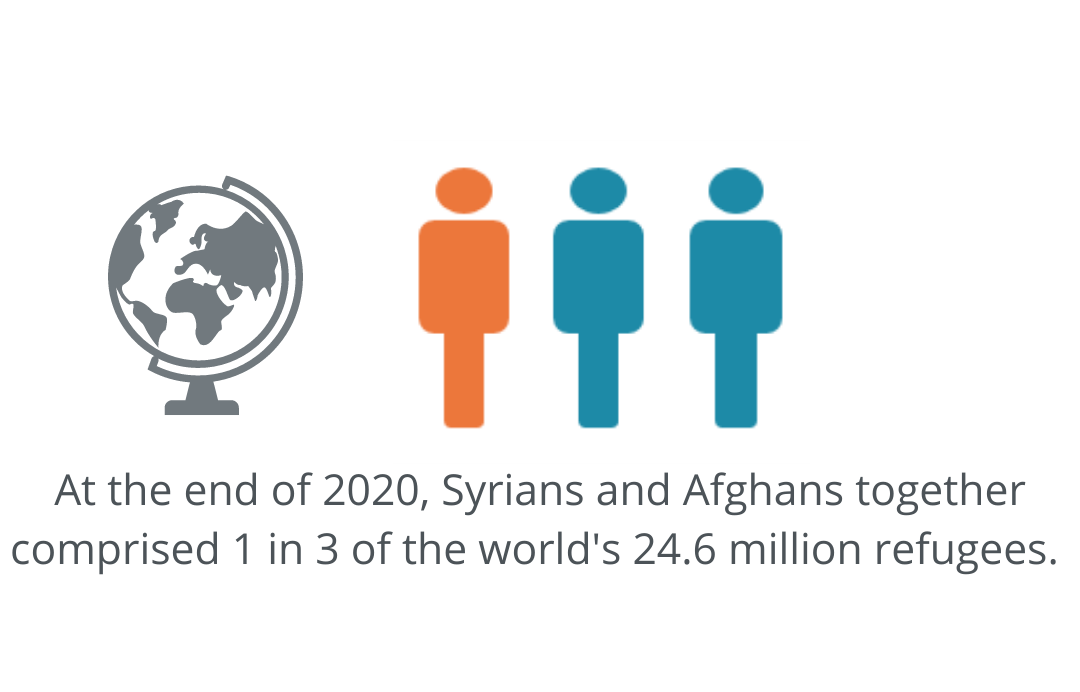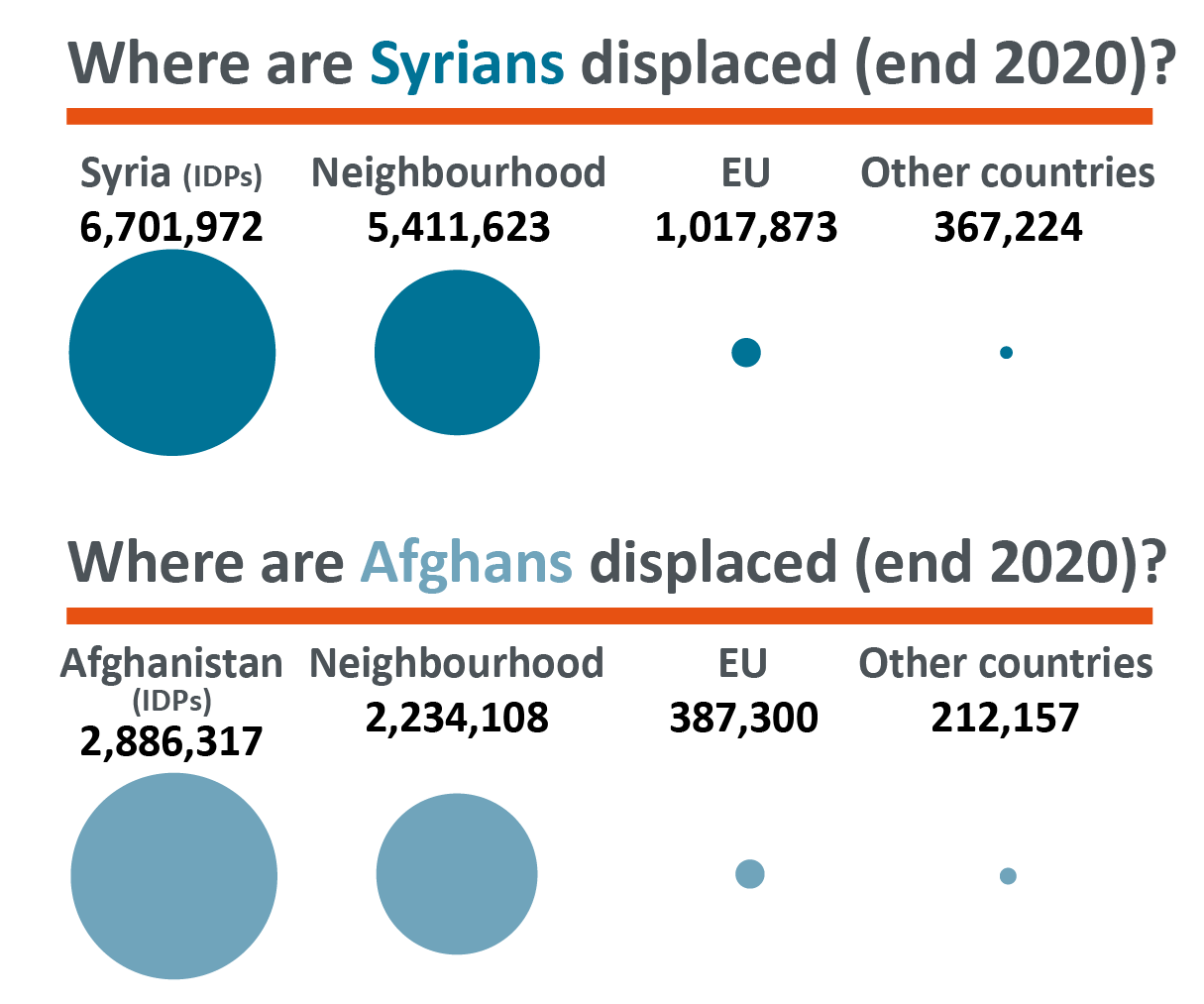TRAFIG policy brief no. 5
Outward and upward mobility
How Afghan and Syrian refugees can use mobility to improve their prospects
Jordan and Pakistan are among the countries that host the most refugees worldwide—refugees who come from countries facing protracted conflicts with no end in sight. TRAFIG research at multiple sites in Jordan and urban Pakistan (conducted before the Taliban takeover of Afghanistan in August 2021) found that, despite myriad challenges, many refugees are mobile—and they are using this mobility to unlock a range of opportunities. However, the potential benefits of mobility are far from being fully leveraged.
This policy brief examines how and why refugees are moving after their initial displacement and suggests how policymakers in the region and elsewhere, in collaboration with humanitarian, development and integration stakeholders, can help Afghans and Syrians tap into outward mobility to improve their upward mobility.
 Figure 1: One in three refugees worldwide is from Afghanistan or Syria. Note: This figure does not include refugees under UNRWA’s mandate. Source: UNHCR, 2021a/ © ICMPD/ Nikolina Sladojevic, Caitlin Katsiaficas, Martin Wagner
Figure 1: One in three refugees worldwide is from Afghanistan or Syria. Note: This figure does not include refugees under UNRWA’s mandate. Source: UNHCR, 2021a/ © ICMPD/ Nikolina Sladojevic, Caitlin Katsiaficas, Martin Wagner
Key findings and policy implications
-
Many refugees move out of camps to other cities in Jordan and Pakistan to join their networks and seek employment and better living conditions. Permitting freedom of movement within host countries would enable more displaced people to maintain their networks, find employment and achieve a sense of stability.
-
While mobility to and from Syria and Afghanistan is particularly important for maintaining networks and livelihoods, some also seek opportunities within the wider region. In allowing for circular mobility, ensuring that any return movements are voluntary is crucial, particularly given the continually changing conflict dynamics in refugees’ countries of origin. Making sure that all returns are voluntary means that mobility can serve as a resource that helps refugees earn a livelihood rather than a feature of protracted displacement and limbo.
-
Movements beyond the region include a mix of short-, medium- and long-term opportunities, including business travel, education, employment and refugee resettlement, but are generally difficult to access. Leveraging the potential of humanitarian and non-humanitarian pathways to expand options for mobility beyond the region, including chances to resettle, reunite with family, work and study, is critical to improving access to sustainable solutions while also easing the strain on major host countries.
 Figure 2: The majority of Afghans and Syrians are displaced in origin countries and neighbouring countries. Note: The circles represent the percentage of the respective displaced populations. The number of Afghans and Syrians abroad encompasses refugees and asylum seekers. Source: UNHCR, 2021g/ ©ICMPD, Nikolina Sladojevic & Martin Wagner
Figure 2: The majority of Afghans and Syrians are displaced in origin countries and neighbouring countries. Note: The circles represent the percentage of the respective displaced populations. The number of Afghans and Syrians abroad encompasses refugees and asylum seekers. Source: UNHCR, 2021g/ ©ICMPD, Nikolina Sladojevic & Martin Wagner
Authors: Caitlin Katsiaficas, Martin Wagner, Katja Mielke, Sarah A. Tobin, Fawwaz A. Momani, Tamara Al Yakoub, Mudassar M. Javed
Cite as: Katsiaficas, C. et al. (2021). Outward and upward mobility. How Afghan and Syrian refugees can use mobility to improve their prospects (TRAFIG policy brief 5). Bonn: BICC. DOI: 10.5281/zenodo.5845984
You can download TRAFIG policy brief no. 5 here.